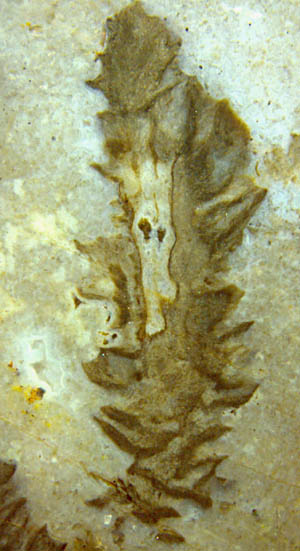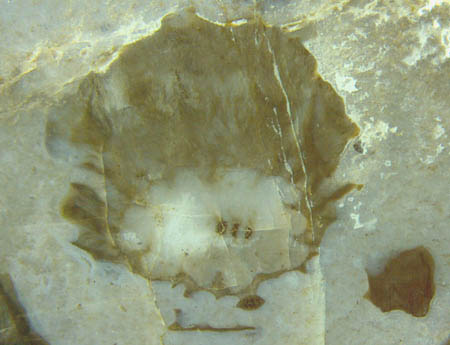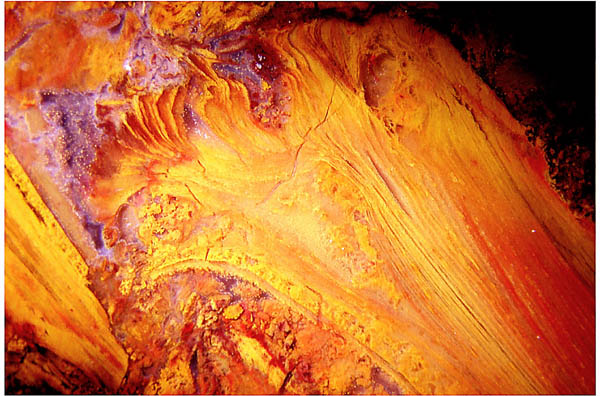Cyanobacteria,
Cyanophytes

Cyanobacteria (cyanophyta, cyanophytes),
commonly known as blue-green algae and as an occasional nuisance in
lakes and pools, "are arguably the most successful group of
microorganisms on earth" [1], which even have brought forth true
multicellular species [2] in the sense that their cell plasma is
interconnected. They do not store their genetic material
in a nucleus: a primitive trait which they have in common with bacteria
and the less well known but likewise numerous species of archaea. The
lack of a nucleus controlling the processes of life in the cells is
considered so essential that the blue-green algae are placed far apart
from the green algae, other algae, fungi, land plants, and animals on
the Tree of Life which represents the descent of the organisms.

So
it is all the more fascinating to see that the lowly beings which seem
to have
come up to us right from the dawn of life on Earth can stick to each
other to form filaments and can form tufts of filaments into wondrous
shapes as if mimicking higher life forms. Although this is not typical
it is worth mentioning since it may draw
attention to the fact that fossil evidence of these organisms is not
restricted to bulky stromatolites, huge deposits if banded iron ore, or
Ám-size unicells but can
occasionally show up as cm-size objects as seen here. Perhaps
the leaf-like formations serve the same purpose as real leaves do:
easier access to sunlight and solutes, compared to configurations with
all cells in a globular lump.
Seen here is the fossil filamentous cyanobacterium Croftalania venusta,
grown in tufts on submerged and
largely
decayed land plants and trimmed into pointed shapes by means
unknown.
Heights of the pictures: 7mm (left), 11mm (right).
Rhynie chert, Lower Devonian.
For more microbes including Croftalania
see
Rhynie
Chert News 23
56
64
67
68
72
80
112
113
121
125
144
146 .
Well-preserved cyanobacteria, also inconspicuous ones, seem to be rare
fossils [3]. So it is
interesting that the conspicuous stacks of thin sheets stained red or
yellow, found in the red cherts of the Permian Doehlen basin, are most
probably the result of sheet-like spreading cyanobacteria
precipitating dissolved iron by oxygen production.
 The thin laminae in the stacks had been
loose at first, as indicated by the disintegrating torn stack in
this picture on the left: Permian
Chert News 8. With
progressing silicification, the stacks
became more gel-like and stiff so that deformation caused them
to break like a solid, as seen in Permian
Chert News
18,
27,
28 .
The thin laminae in the stacks had been
loose at first, as indicated by the disintegrating torn stack in
this picture on the left: Permian
Chert News 8. With
progressing silicification, the stacks
became more gel-like and stiff so that deformation caused them
to break like a solid, as seen in Permian
Chert News
18,
27,
28 .
Stacks of thin microbial sheets are seldom seen in the
Rhynie chert: Rhynie
Chert News 160.
[1]
I. Stewart, I.R. Falconer: Cyanobacteria and
cyanobacterial toxins, in: Oceans and human health,
Eds:
P.J. Walsh, S.L. Smith, L.E. Fleming, Academic Press 2008,
271-296.
[2] Bettina
E. Schirrmeister, A. Antonelli, H.C. Bagheri:
The origin of multicellularity in cyanobacteria.
BMC Evolutionary Biology
2011, 11:45
[3] T.N. Taylor,
E.L. Taylor, M. Krings: Paleobotany,
Elsevier 2009, 115-117.


 The thin laminae in the stacks had been
loose at first, as indicated by the disintegrating torn stack in
this picture on the left: Permian
Chert News 8. With
progressing silicification, the stacks
became more gel-like and stiff so that deformation caused them
to break like a solid, as seen in Permian
Chert News
18,
27,
28 .
The thin laminae in the stacks had been
loose at first, as indicated by the disintegrating torn stack in
this picture on the left: Permian
Chert News 8. With
progressing silicification, the stacks
became more gel-like and stiff so that deformation caused them
to break like a solid, as seen in Permian
Chert News
18,
27,
28 .